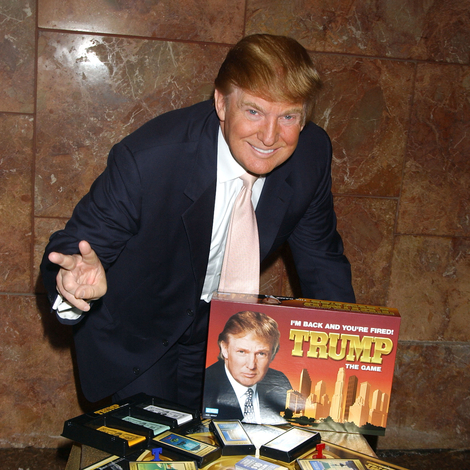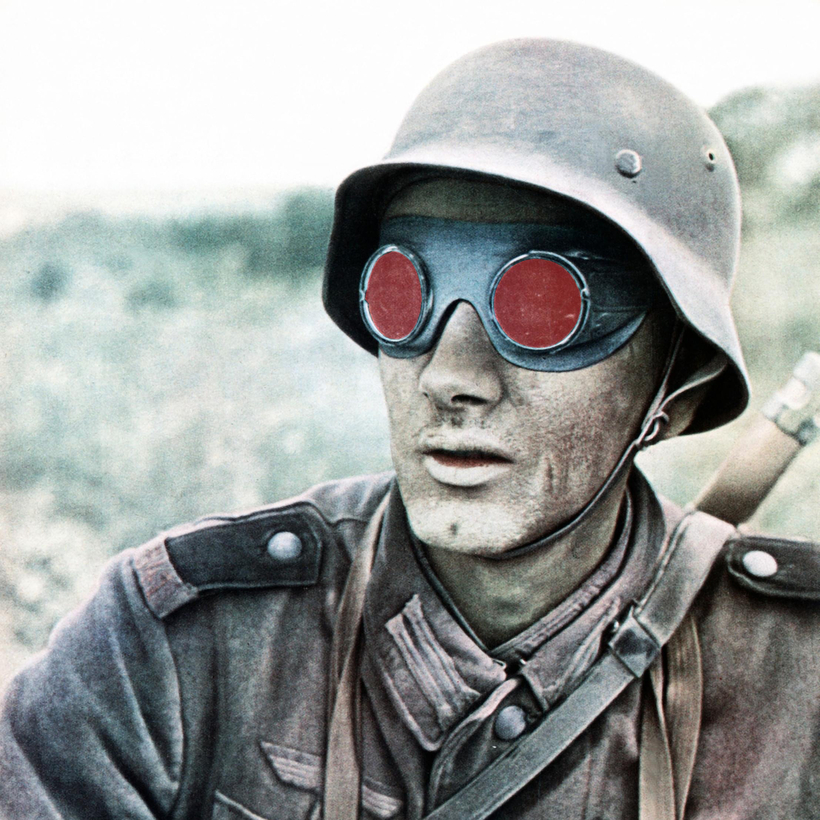When I was a boy, notwithstanding my mother’s earnest attempts to get me into Jane Austen, I subsisted almost entirely on a diet of Commando comics. These were British war stories, often written and drawn by real W.W. II veterans, and fans like me accordingly looked down on their fantastical American-superhero counterparts.
There were, and probably still are, several unbreakable rules to these fortnightly comics, with their garish covers and lurid titles. First, all Cockneys were cheeky; all lieutenants posh but unblooded; and all sergeants, grizzled. Second, the Jerries in Rommel’s Afrika Korps were honorable adversaries, while those in the S.S. were murderous, sneering bastards who cried Achtung Schweinhund! and looked like that blond, super-Nazi major in Where Eagles Dare.

But the most hallowed of these rules was the third, which certainly was not restricted just to the Commando canon: Blighty won the war by a mixture of lightly worn good humor, cultivated eccentricity, and diabolical cleverness.
I read hundreds of the damn things, and the after-effects have long lingered. It was only relatively recently that I realized that all those entertainingly cunning tricks—the Man Who Never Was, the First Army, the Double-Cross System—really didn’t contribute that much to victory, especially when one considers that the Soviets threw two million men at the German front during Operation Bagration, launched two weeks after D-day. Had the Wehrmacht been able to divert even a modest fraction of its forces to France, well, let’s just say that there’d have been no saving Private Ryan.
The phenomenon I call “Bletchley Park–itis” is of a piece. Symptoms include an unwavering belief that Britain broke the fearsome Enigma code, the genius Alan Turing deployed it brilliantly against the unwitting idiots at German High Command, and Nazi communications were an open book for the boffins of Bletchley Park. Numerous movies and books have loyally hewed to that line, but, like the proverbial curate’s egg, parts may be good while the rest is bad history.

That brings me to my book Phantom Fleet, which uncovers the story of how the U.S. Navy tracked, hunted, and ultimately heisted a Nazi U-boat (U-505) and made it, and its crew, vanish into thin air without alerting the Germans that one of their submarines had been captured alive on the high seas. I don’t think I’m giving away a major spoiler if I say that you can visit U-505 today at the Griffin Museum of Science and Industry, in Chicago—admittedly, a rather unexpected place for a W.W. II submarine to be.
Aside from the sheer audacity and glory and fun of the exploit, what’s remarkable is that a trove of intelligence documents and, perhaps most importantly, two Enigma machines (currently owned by the National Security Agency) fell into American hands. The irony of this coup is that the machines were nowhere near as useful as people naturally assume. They were a nice-to-have rather than a need-to-have, for by that stage of the war—just a couple of days before D-day—the Americans had almost completely taken over the vital Enigma decryption program from their British allies.
Now, when I started the book, I was myself suffering from Bletchley Park–itis, but as I progressed, I realized, with something of an unpleasant shock, that I had been delusional.

The fact is, Bletchley’s tremendous, immortal achievements in the signals war occurred during the first half of the conflict, 1939 to 1942. By 1943, Britain’s sinews were being strained almost to their breaking point by the hard audit of war. That March, Bletchley Park was running 60 “bombes” (the letter-crunching machines that eliminated millions of impossible Enigma combinations to allow codebreakers to focus on a manageable number of possible ones), all of which were last-generation models.
At the same time, the Americans approved the manufacturing of up to 336 homegrown, advanced bombes. The pharaonic grandiosity of the project was incomprehensible to the hard-pressed British. Its cost was astronomical, its scale astounding, its pace astonishing. In September, the first 6 machines arrived in Washington; by November, there were 80.
From then on, the Americans’ share of Enigma work remorselessly expanded at the expense of their ally’s. Months before D-day, Washington had very little call for the gentlemanly codebreakers of Bletchley Park.

This unbridgeable technology gap would have profound consequences in the postwar world. In 1952, for instance, the N.S.A. would be born, its unparalleled, and continuing, cryptological dominance founded on the wartime Enigma project.
And at the strategic level, while it was true that the old empire that had so recently spanned a quarter of the globe still had life in it and that the trappings of power remained, underneath the gilded crown and the silver scepter the battered tin was showing.
Centuries earlier, Churchill’s kinsman the Duke of Marlborough had said that “in every alliance one party wears boots and spurs while the other wears a saddle.” In 1943 that prophecy had begun to come to pass, just not in the way anyone had anticipated. Earlier in the war, the Americans had been obliged to let the British be the plumed rider, but Washington was now not only firmly in the saddle but also owned the horse, the carriage, the highway, and the footmen.
I never read a Commando comic telling that story, but I wish I had.
Alexander Rose is the author of several books, including The Lion and the Fox, Empires of the Sky, Men of War, American Rifle, and Washington’s Spies, which was adapted into an AMC drama series. He writes the Spionage Substack

